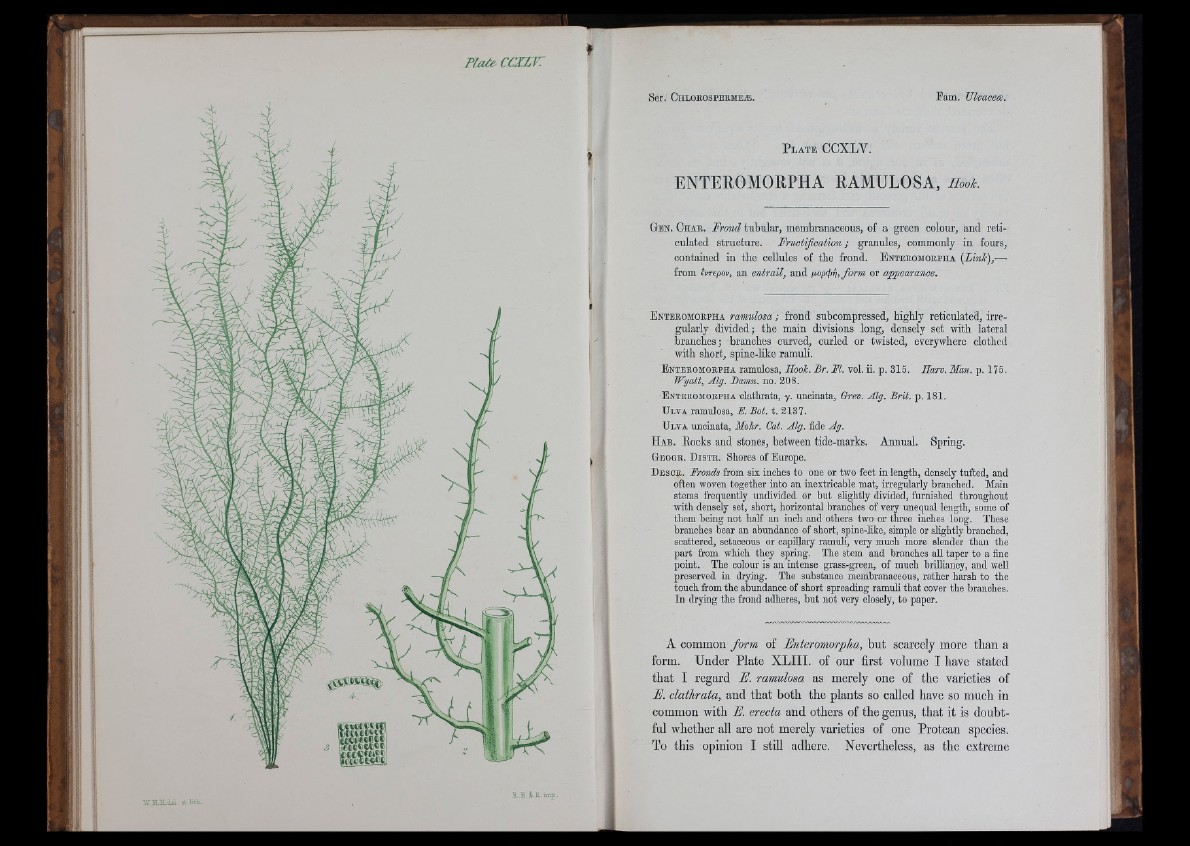
E.B.itU.imj.
P la t e CCXLV.
ENTEROMORPHA RAMULOSA, Hook.
G e n . C h a e . Frond tu b u la r, membranaceous, of a green colour, an d r e tic
u la ted s tru c tu re . Fructification; gran n ie s, commonly in fours,
co n ta in ed in th e cellules of th e fro n d . E n t e e om o e p h a [Link],—
from errepov, a n entrail, an d iu>pxj>ri,form, or .
E nteeomoepha ramnlosa; frond snbcompressed, highly reticulated, irregularly
divided; the main divisions long, densely set with lateral
branches; branches curved, curled or twisted, everywhere clothed
with short, spine-hke ramrdi.
E n t e e om o e p h a ramulosa, Hook. Br. M. vol. ii. p. 315. Harv. Man. p. 175.
Wyatt, Alg. Damn. no. 308.
E n te e om o e p h a clathrata, y. uncinata, Grev. Alg. Brit. p. 181.
U lva ramulosa, H. Bot. t. 3137.
Ulta uncinata, Mohr. Cat. Alg. fide Ag.
H a b . Eocks and stones, between tide-marks. Annual. Spring.
Geoge. D is t e . Shores of Europe.
D e so e . Fronds from six inches to one or two feet in length, densely tufted, and
often woven together into an inextricable mat, irregularly branched. Main
stems frequently undivided or b u t slightly divided, furnished throughout
with densely set, short, horizontal branches of very unequal length, some of
them being not half an inch and others two or three inches long. These
branches bear an abundance of short, spine-Hke, simple or slightly branched,
scattered, setaceous or capillary ramuli, very much more slender than the
p a rt from which they spring. The stem and branches all taper to a fine
point. The colour is an intense grass-green, of much brilliancy, and well
preserved in drying. The substance membranaceous, rather harsh to the
touch from the abundance of short spreading ramuli th a t cover the branches.
In drying the frond adheres, but not very closely, to paper.
A common form of Enteromorpha, but scarcely more than a
form. Under Plate XLIII. of our first volume I have stated
that I regard E. ramulosa as merely one of the varieties of
E. clathrata, and that both the plants so called have so much in
common with E. erecta and others of the genus, that it is doubtful
whether all are not merely varieties of one Protean species.
To this opinion I still adhere. Nevertheless, as the extreme